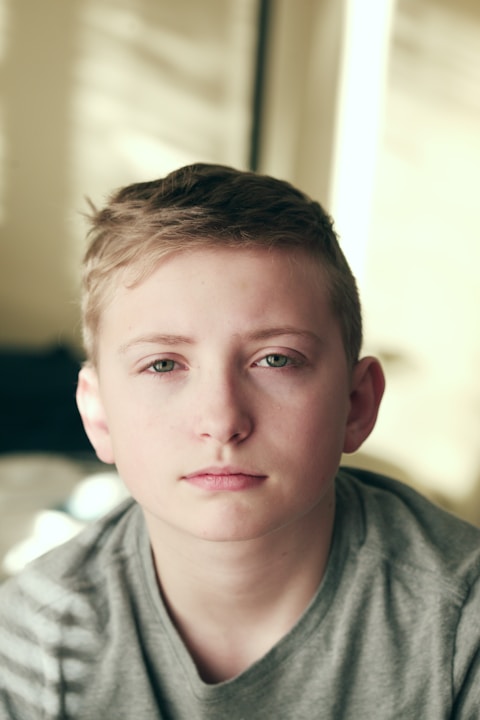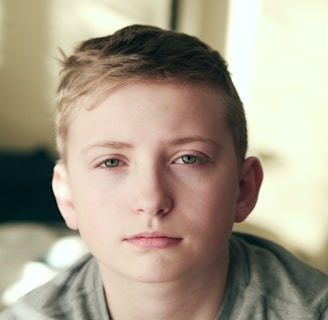Targeted abuse
Abusive behavior in domestic settings, such as when an abusive husband targets his wife and one child while not targeting other siblings, can be attributed to a complex interplay of psychological, social, and individual factors. This outline presents key reasons behind such selective targeting:
1. Manipulation and Division: By targeting specific members of the family, the abuser can create divisions, isolate the victims, and maintain control over the household. This can also serve to undermine the support system within the family, making it more difficult for the victims to seek help or unite against the abuser.
2. Projection of Personal Issues: The abuser may project unresolved personal issues onto specific family members. For example, if the abuser identifies traits in the wife or a particular child that remind him of past traumas or conflicts, he might direct his abusive behavior towards them.
3. Power Dynamics: The dynamics within the family unit play a crucial role. The abuser may feel threatened by or competitive with certain family members, leading to selective abuse as a means to assert dominance and mitigate perceived threats to their authority or status within the family.
4. Perceived Vulnerability and Control: Abusers often target individuals they perceive as more vulnerable or easier to control. A particular child or the spouse might display traits or behaviors that the abuser perceives as weak or submissive, making them easier targets for exerting control and dominance.
5. Psychological Pathologies: Certain psychological disorders or pathologies can influence whom an abuser targets. Personality disorders, substance abuse, or a history of being abused themselves can affect an abuser's behavior and decision-making, leading to irrational and selective targeting within the family.
6. Cultural and Societal Influences: Societal norms and cultural backgrounds can play a role in shaping an abuser's perceptions and actions. For instance, gender roles and expectations might lead to more severe or frequent abuse of the wife, or cultural biases might influence the differential treatment of children.
7. Response to Victim's Behavior: The reaction of the wife or child to the abuse might also play a role. If one child or the spouse is more submissive or less likely to retaliate or seek help, the abuser might find it easier or more gratifying to target them.
Understanding the complex and varied reasons behind selective targeting in domestic abuse is crucial for developing effective interventions and support systems for victims. Each case of abuse has unique dynamics and requires a tailored approach to ensure the safety and well-being of all family members involved.


Impact of selective abuse
Selective abuse within a family, where an abusive parent or guardian targets only specific members like a spouse or a particular child while sparing others, is a recognized but not extensively quantified phenomenon. The prevalence of this type of abuse is difficult to ascertain due to underreporting and the complexity of family dynamics. However, its impact on the health and well-being of victims, particularly children, is significant and well-documented.
Impact on Children:
1. Psychological and Emotional Trauma: Children who are selectively targeted often experience profound psychological and emotional trauma. This trauma can manifest as anxiety, depression, post-traumatic stress disorder (PTSD), and other mental health issues. The feeling of being singled out for abuse can also lead to feelings of worthlessness, isolation, and betrayal, particularly if they perceive that others in the family are being spared.
2. Behavioral Issues: These children may exhibit behavioral issues such as aggression, withdrawal, difficulties in school, and social challenges. They might also engage in self-harm or develop eating disorders as coping mechanisms.
3. Impaired Social Development: Experiencing abuse can impair a child’s ability to form healthy relationships. They may struggle with trust issues, have difficulty interpreting social cues, or mimic abusive behaviors in their interactions with others.
4. Long-term Health Effects: The long-term health effects of selective abuse on a child can be severe. Studies have shown that prolonged exposure to abuse and trauma in childhood can lead to chronic health conditions like heart disease, obesity, diabetes, and substance abuse in adulthood.
5. Educational and Cognitive Impact: Children who are victims of abuse may also suffer from cognitive and educational setbacks. They may have difficulty concentrating, exhibit lower academic performance, and have a higher risk of dropping out of school.
It's important to note that the impacts of selective abuse can extend to non-targeted siblings as well. They may experience guilt, confusion, and emotional distress from witnessing the abuse, and can also develop similar long-term issues.
In sum, while the exact prevalence of selective abuse is hard to determine, its impact on the targeted child is profound and multifaceted, affecting their emotional, psychological, and physical health, as well as their social development and future well-being. Addressing these issues requires a holistic approach involving mental health support, educational intervention, and a safe and supportive environment.


Contact


